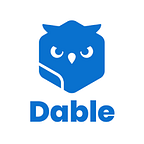RTB(Real Time Bidding) The 4 Big Reasons Why it’s a Major Trend — Part 3
All advertisers expect high outcomes.
Let’s say there are two situations A and B. In situation A we spend USD10 and earn a USD100 profit, which is 10 times the actual amount. Whereas, in situation B we get to spend USD100 and earn a profit of USD10,000, which is 100 times the actual amount. If asked to choose one situation, all advertisers would choose the latter. In other words, to an advertiser the ROI(Return Of Investment) is important, therefore advertisers are ready to spend more if advertising results maintain in the high. And RTB(Real Time Bidding) is optimized in making ROI.
RTB(Real Time Bidding) The New Paradigm to Online Advertising — Part 1
RTB(Real Time Bidding) Process and Main Bidding Model — Part 2
4 reasons why RTB is a major trend
- Improving ad results
The first and foremost reason why RTB is a major trend lies in the obvious reason — improving ad performance. In the past, it was necessary to purchase inventory at media-specified prices, regardless of advertising performance. Because of this, it is inevitable but to pay high costs, despite the low advertising performance,
On the other hand, RTB trades high-performance targets at high prices and low-performance targets at low prices, depending on ad performance. RTB contributes to maximizing advertiser revenue and increasing user conversion rates by reducing spending on users who don’t meet advertisers’ targets and choosing to bid on customers who offer better value.
- Efficiency on advertising management
RTB has improved efficiency in executing and managing advertising. In the past, the whole process for executing advertisements was conducted by ‘people’. It took 1 to 2 months to search the media, contact and arrange meetings, negotiate a unit price, sign a contract, deliver the creative and make the ad go live. In order to advertise on 10 media, this process had to be repeated 10 times. RTB systemizes this process, and sends advertisements to hundreds of media in as little as 30 minutes.
In addition, RTB in regards to advertising management can automatically execute advertising costs for actions that advertisers want, such as focusing on advertisements with high CTR or bidding on advertisements with engagement etc. Even after a live advertising campaign, a higher bidding or a budget increase is possible on higher-performing targets or creatives. As a result, RTB helps improve ad performance by improving the convenience of ad management by reducing time and manpower resources through improved ad operations.
- Increasing target coverage
Let’s say you advertise on a site visited by one million people a day. No matter how many million people visit, only few people actually see the ad at the time the advertiser wants, because the visitor does not stay on the site 24 hours a day. In addition, among the million visitors, showing the ad to users that the advertiser wants based on gender, age, and region couldn’t help but to be limited.
Because RTB is interlocked with a number of ad networks that keep numerous media, it can expose ads to hundreds of media with millions of visitors. As a result, RTB is not only easy to expand the reach of advertisements, but even if a million people view the advertisements equally, it can also attract more users by exposing the advertisements according to the time, place, gender, age, device, interests etc. desired by the advertiser.
- Improving transparency of ad inventory
In order for media companies to participate in RTB, information such as the domain information of the media where the advertisement is exposed, format of advertisements, size of the advertisements, location of exposure, and the minimum CPM standards etc. should be disclosed. The advertiser will decide how much to bid on the impression through this information. RTB improves the transparency in ad impressions, allowing advertisers to run ads with a more reasonable charge.
In addition, advertisers can check through advertising reports on information such as which creative, at what time, from which media created a successful outcome. Through this transparent performance information, advertisers can control exposed websites and therefore improve their advertising performance.
So far, we have looked at the reasons for the emergence of RTB over three sessions, the main players of RTB, the process and main bidding model of RTB, and the advantages of RTB. In the next post we will share Dable’s know-how in handling RTB. So stay tuned!
